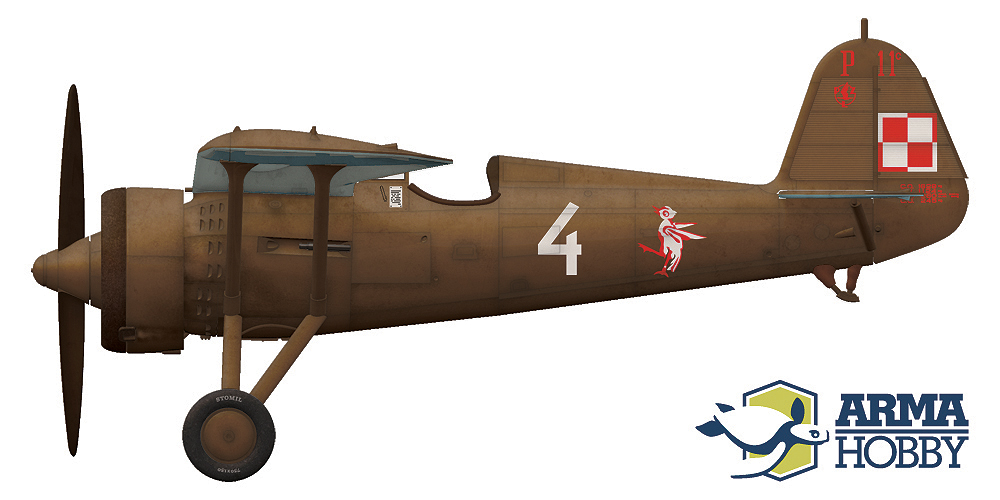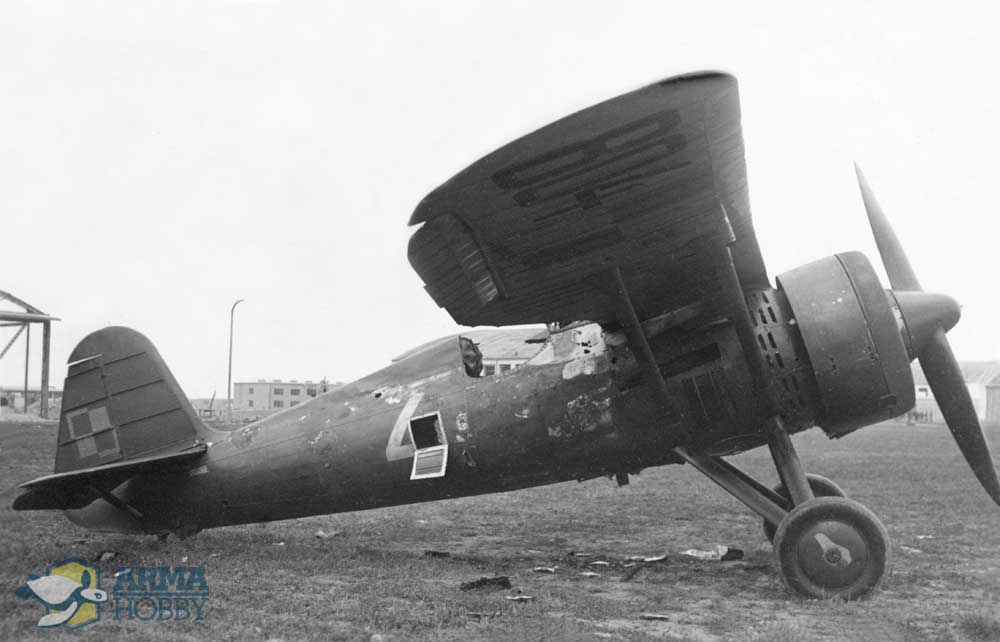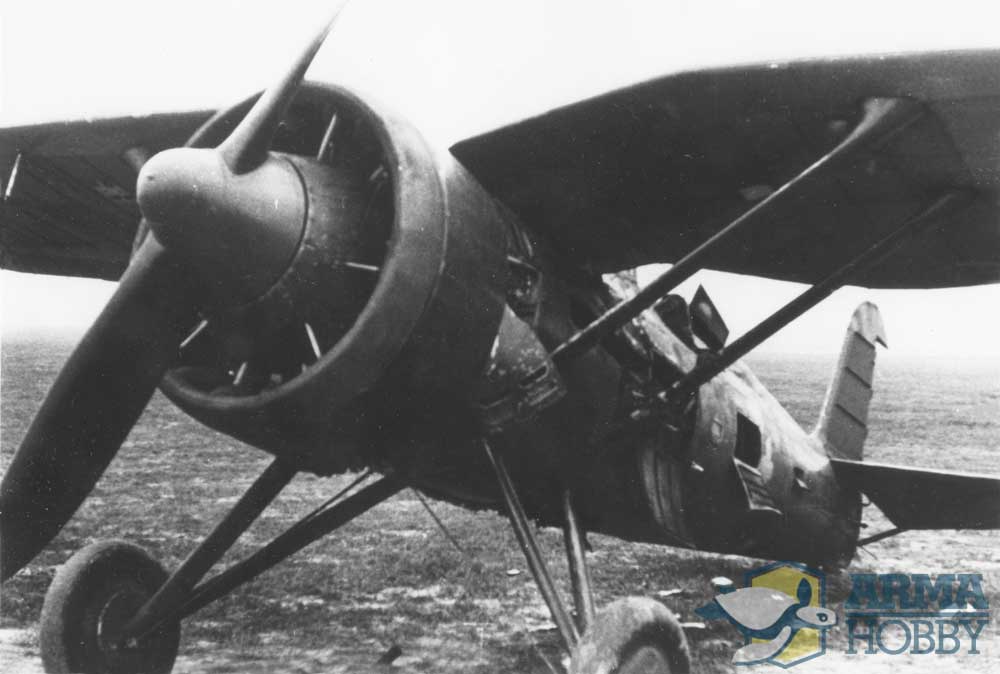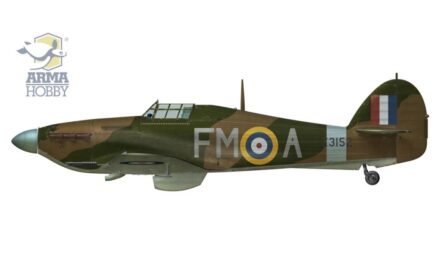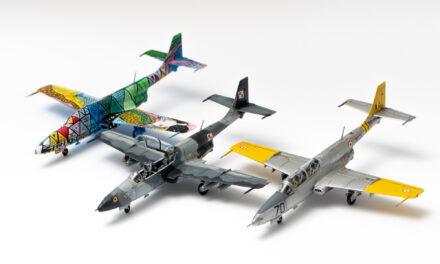Great counteroffensive of two Polish armies “Poznań” and “Pomorze”, started on 9th September 1939 with surprising attack against the wing of the German 8th Army advancing from the west towards Warsaw, is called Battle of the Bzura. Untill 1941 it was the biggest allied offensive operation of the war. After initiall success and five days of Polish attacks, Germans have started to regain the initiative. It was caused mainly by the depleting supply of Polish units and heavy attacks of the powerful Luftwaffe units. Polish III/3 “Ravens” Fighter Wing from Poznań, assigned to the “Poznań” Army, was too small to effectively defend the ground forces. Despite the odds, the Ravens bravely fought against the Luftwaffe till the end of the battle on 17th September when encircled Polish armies attempted to finally break through to Warsaw and remains of the air forces were evacuated to the east.
The last army squadron
The III/3 Fighter Wing from Poznań called “Ravens” (because of the marking of two its squadrons) was after 7th September the last bigger fighter unit still performing duty for its army. The rest of the fighters, both from the armies and from independent Pursuit Brigade, were merged under one command and sent to the airfields in the east part of the country for reorganization and replacements. Only the “Raven” Wing (131. and 132. Fighter Squadrons), after heavy fighting in western Poland and consecutive changing of airfields (following the “Poznań” Army moving eastwards to Warsaw) was just beginning its most intensive period of fighting in the Battle of the Bzura. In order to prepare the unit for the forthcoming battle, on 8th September its commander, Maj. Mieczysław Mümler decided to disband the 131. Squadron and incorporate its pilots and airplanes into the 132. Squadron. After this operation 132. Squadron had quite impressive strenght of 14 PZL P.11c figters (and one liaison RWD 8) and 20 pilots (standard Polish fighter squadron had 10 airplanes and 13-15 pilots). Five unfit to fight and most damaged airplanes from both squadrons and all unnecessary ground personnel was sent to the east near Lublin, where they joined the rest of Polish fighter aviation, performing reorganisation.
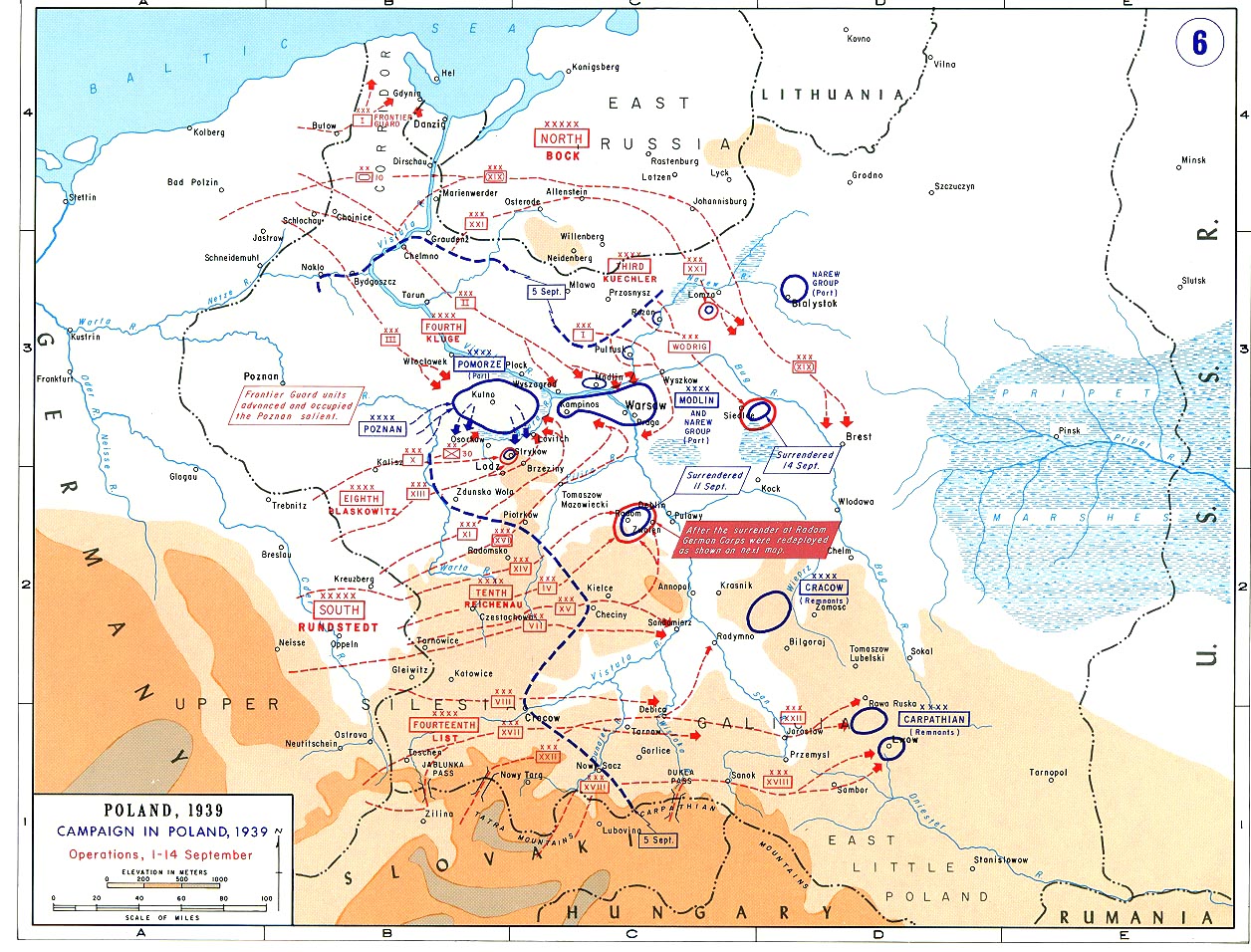 Battle of the Bzura River – beginning: map from Wikimedia Commons public domain
Battle of the Bzura River – beginning: map from Wikimedia Commons public domain
Fights near the Bzura river
The battle begun on the following day. Since morning the Wing, operating from Ostrowy near Kutno airfield, performed operations typicall for the army aviation: escorting of the reconaissance Karaś airplanes from 34. Reconaissance Squadron and air patrols against the enemy. Summary of the 9th September is one air victory (Messerschmitt 110 shot down by 2nd Lt. Lech Grzybowski) and one PZL P.11c lost in fight against Messerschmitts 109 (2nd Lt Witold Jaroszka was killed). The next day at sunrise the Wing was moved 6 miles nortn to the new airfield, as the previous one has been located by the Germans. The 10th September was the next day of intense operations, which on the afternoon resulted in fight of 7 PZL P.11c against 5 Messerschmitt 110 with the result of two victories for each side. The fights on the following days were similar, with more and more reconaissance duties (due to heavy losses of reconaissance PZL P.23 Karaś airplanes of the 34. Squadron) and even with one successful air-to-ground attack against German motorised column. The Squadron was several times forced to change its airfield as the Germans were trying to locate their base in order to bomb them on the ground.
Final evacuation
On the 16th September it became clear that the Polish ground forces, encircled on the quite small area, have been beaten and their only hope is an attempt to break through the German lines to Warsaw. The Squadron operated in very difficult conditions.
Pocket near the Bzura river and evacuation to Brześć and Małaszewicze, map from Wikimedia Commons
From Mjr. Mieczysław Mümler’s report:
Before the squadron managed to take-off, about 10 a.m. came the German air raid of dive-bombers and fighters and started to bomb the area close to the camouflaged airfield (near our airfield stationed supply columns, infantry, ground personnel of the 34. Reconaissance Squadron). In order to keep our hidden in the forest units undetected I ordered the pilots to stay on the ground. Thanks to this decision and also thanks to that on dawn I ordered to harrow our airfield so the airplane tailskid trails were not visible we have not been detected and bombed. Two more air raids came but were unable to find us.
After they left the fighters were able to take-off safely. Three PZLs fought against nine Messerschmitts without victories but also withiout loss.
Mjr. Mieczysław Mümler reports:
On afternoon big groups of retreating infantry and cavalry begun to march through the airfield. I flew on the reconaissance myself to look what’s going on and if the airfield near Rybno is still fit for us. I have noticed general retreat towards Łowicz, near Kiernozia supply colums were standing still, no fights near Łowicz, only German tanks going towards Kiernozia. Fights in Sochaczew area, artillery from the east (German) is bombing our units standing on the western side [of the Bzura river]. The airfeld I intended to use was under German artillery fire and unusable.
In such situation, with the permission of the command, Mjr. Mümler has decided to send the ground personnel with retreating infantry and evacuate remaining airplanes to the east.
Mjr. Mieczysław Mümler:
We have said goodbye to each other and with Cpt. Jastrzębski and Lt. Chełchowski [medic officer of the Fighter Wing] we came back to the airfield on foot. Before we managed to remove radio from Cpt. Jastrzębski’s P.11c so the Dr. Chełchowski could fly with him, the dawn came.
It was 17th September, the day of Soviet attack. The Wing had only three operational airplanes. The first took Mjr. Mümler, the second, piloted by Cpt. Jastrzębski, had doctor Chełchowski lying in the fuselage behind the pilot, and the third, in the same configuration, was occupied by two 2nd Lieutenants Lech Grzybowski and Henryk Bibrowicz. Initially only two first airplanes were able to take-off, but after some time also the third engine begun to work and the last PZL of “Raven” Wing flew east, towards Brest-Litovsk. Over the Brest Fortress, burning and encircled by the Germans all the planes have been shot by the Flak. Since that moment fate of each is different.
Mjr. Mieczysław Mümler managed to land safely and found some fuel. He flew more to the east to Kowel and on 18th September flew to Romania. He writes:
It was evening when I finally took-off. In Łuck I saw Soviet columns marching to the west. All Lwów area was burning. From Lwów to Bóbrka fires everywhere. From Złoczów to Lwów marching Soviet units. The same in Buczacz and Zaleszczyki. The dusk came, I had very little fuel, it started to rain. Flying along the Dniestr river [at that time Dniestr was Polish-Romanian border] at late dusk I have noticed Soviet units in Zaleszczyki. I flew to Cernăuţi [then Romania] and there I have landed at night.
From Romania, like many other Polish pilots, he went to France, where he fought in Spring 1940, then went to Britain where he created and commanded reborn Poznań squadron, numbered 302, which fought in Battle of Britain as a part of Douglas Bader’s Duxford “Big Wing”.
Cpt. Jastrzębski with doctor Chełchowski have landed in the field due to lack of fuel and had to abandon the airplane. They joined the group of Gen. Kleeberg, the last Polish big unit which fought openly against the Germans till the October. Later Cpt. Jastrzębski through Slovakia and France went to England, where he lost his life during Battle of Britain fighting in 302 squadron. Doctor Chełchowski has been caught by Soviets and went to P.O.W. camp in Starobielsk (Russia). He was murdered by Soviets in Katyń Massacre with over 22 000 other Polish officers-prisoners of war in 1940.
Lech Grzybowski and Henryk Bibrowicz have landed on the abandoned and destroyed Polish airbase in Małaszewicze west of Brest Fortress. Few minutes later German tanks have taken the airfield. The aviators were able to set their plane in fire and escape unnoticed. After years of adventures including Soviet prisons they reached Polish Army in 1942.
The “white 4” from Poznań
Their airplane, PZL P.11c from 131. Fighter Squadron, partially burned, has been left on the Brest-Małaszewicze airfield. The Germans photographed it several times. We don’t know how many of the 31 German airplanes granted to the whole Poznań Fighter Wing have been shot down by this airplane, but for sure it participated in all important air battles of the Wing, since very first day of the war near Poznań, through the Battle of the Bzura till the last day of final evacuation. It was late procuction series airframe with unknown serial number. Initially marked with squadron insygnia: white raven with red feathers, white tactical number “4” on both fuselage sides and standard Polish checkerboards and stencils. During the war, like many other fighters stationed on the frontline airfields, had the ravens and the checkerboards on the top wing surface overpainted. It is possible that also rudder checkerboard has been covered with thin, semi-translucent layer of the khaki paint to reduce its visibility. Underwing “804 P” black numbers have not been overpainted. Discolorations on the fuselage are result of fire. Also the dark internal surfaces of the open access panels are most probably result of fire, not the non-standard interior paint finish.
More about the 131. Poznań Squadron insygnia – the raven – in the next part of the PZL P.11c story.
All the photos of the “white 4” comes from Dr. Tomasz Kopański collection.
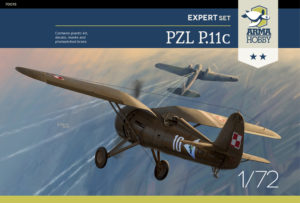 Advertisment
Advertisment
Selected bibliography:
- Polish Fighter Colours 1939-1947. Praca zbiorowa. Wyd. Stratus, Sandomierz 2016
Modeller, son and father of a modeller. Loves digging through references and analysing old photographs. He builds aircraft, ship and vehicle models, the older the better. He has a weakness for Polish equipment, but does not despise the RAF, FAA and Great War topics. A journalist by training.
This post is also available in:
 polski
polski


